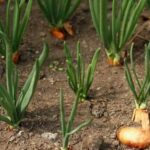Site-specific risk assessment in contaminated vegetable gardens is a crucial process that aims to evaluate the potential risks posed by contaminants present in specific garden locations. It involves identifying and analyzing the unique factors of a particular site that may influence contamination levels and subsequently impact public health. Conducting these assessments is essential to understanding the scope of contamination, determining appropriate mitigation measures, and safeguarding the well-being of individuals consuming produce from these gardens.
Contaminants in vegetable gardens can originate from various sources including soil, water, and air pollution. Understanding the common contaminants found in these gardens is essential for assessing health risks accurately. By examining the sources of contamination, such as industrial activities, agricultural practices, or improper waste disposal, stakeholders can better comprehend the potential hazards present in contaminated vegetable gardens. This information underscores the importance of site-specific risk assessments tailored to address specific contaminants and their sources.
In order to conduct effective risk assessments in contaminated vegetable gardens, it is crucial to consider site-specific factors that may influence contamination levels. Factors such as location, topography, and surrounding land use can impact the spread and concentration of contaminants within a garden area. By addressing these unique elements in risk assessments, stakeholders can develop targeted strategies for mitigating risks and minimizing potential health threats associated with consuming vegetables grown in contaminated soil.
Understanding Contaminants in Vegetable Gardens
Vegetable gardens are a valuable source of fresh produce for many households, but they can also be subject to contamination from various sources. Understanding the contaminants commonly found in vegetable gardens is crucial for conducting effective site-specific risk assessments to ensure the safety of the produce grown. One significant contaminant found in vegetable gardens is heavy metals, such as lead, arsenic, and cadmium.
These metals can originate from sources like contaminated soil, water runoff, or even atmospheric deposition. Pesticides and herbicides are another common type of contaminant that can affect vegetable gardens, especially if improperly used or applied.
The sources of contamination in vegetable gardens are diverse and can vary depending on the location and surrounding environment. Soil pollution is a major contributor to garden contamination due to historical land uses, industrial activities, or improper waste disposal practices. Water pollution from nearby agricultural runoff or industrial discharges can also introduce contaminants into the garden through irrigation or rainwater.
Additionally, air pollution from vehicle emissions, nearby factories, or burning of waste materials can deposit pollutants onto plants and soil in the garden. Understanding these sources of contamination is essential in conducting site-specific risk assessments to identify potential risks to human health.
In conducting site-specific risk assessment in contaminated vegetable gardens, it is crucial to consider not only the types of contaminants present but also the pathways through which they may enter the food chain and pose risks to consumers. By evaluating factors such as soil composition, drainage patterns, proximity to pollution sources, and prevailing wind directions, a more accurate assessment of potential exposure can be obtained. This detailed understanding allows for targeted mitigation strategies to minimize risks effectively.
Site-Specific Factors to Consider
Site-specific risk assessment in contaminated vegetable gardens involves a detailed analysis of factors that are unique to each garden location. To properly conduct such assessments, it is crucial to consider specific characteristics of the site that can influence contamination levels and potential risks. Some key factors to take into account include:
- Location: The proximity of the vegetable garden to potential sources of contamination, such as industrial facilities, highways, or agricultural runoff, can significantly impact the level of pollutants present in the soil and plants.
- Topography: The slope and drainage patterns of the land can affect how contaminants move through the soil and groundwater, potentially leading to higher concentrations in certain areas of the garden.
- Surrounding Land Use: The types of activities taking place in neighboring properties, such as commercial agriculture, construction sites, or residential areas, can contribute to contamination through the spread of pollutants via air or water runoff.
Taking these site-specific factors into consideration is essential for conducting accurate risk assessments and implementing effective mitigation strategies in contaminated vegetable gardens. By understanding how location, topography, and surrounding land use influence contamination levels, gardeners can make informed decisions to protect their crops and public health.
It is important not only to identify potential contaminants but also to understand how they interact with specific site conditions. Conducting a thorough site-specific risk assessment allows for a targeted approach to managing risks based on the unique characteristics of each contaminated vegetable garden. This tailored strategy ensures that mitigation measures are effective in reducing exposure pathways and safeguarding the safety of produce consumed from these gardens.
Methods of Risk Assessment
Site-specific risk assessment in contaminated vegetable gardens involves the use of various methods to identify and evaluate potential risks to human health and the environment. One common method is the soil testing, which analyzes the levels of contaminants present in the soil, such as heavy metals or pesticides.
Water testing is another important method that assesses the quality of water sources used for irrigation in vegetable gardens, determining if it poses any health risks. Air quality monitoring can also be conducted to evaluate potential contamination from nearby industrial activities or traffic emissions.
One effective method of risk assessment in contaminated vegetable gardens is the use of bioaccumulation studies, which examine how contaminants are absorbed by plants and transferred to humans through consumption. Another approach is exposure modeling, which estimates the amount of contaminants that individuals may be exposed to based on their proximity to the contaminated site and their consumption habits. Additionally, epidemiological studies can provide valuable data on the health effects associated with exposure to specific contaminants found in vegetable gardens.
| Risk Assessment Methods | Advantages | Disadvantages |
|---|---|---|
| Soil Testing | Provides direct measurement of soil contamination | May not capture all contaminants present |
| Water Testing | Identifies potential health risks from contaminated water sources | Requires specialized equipment and expertise |
| Bioaccumulation Studies | Determines how contaminants transfer from soil to plants to humans | Time-consuming and resource-intensive process |
It’s essential for individuals conducting site-specific risk assessments in contaminated vegetable gardens to carefully consider the specific context and characteristics of each site. By employing a combination of different methods, experts can obtain a comprehensive understanding of the risks posed by contamination and develop appropriate mitigation strategies to protect public health.
The data collected through these assessments not only helps inform decision-making processes but also supports regulatory efforts aimed at safeguarding both consumers and the environment from potential harm.
Case Studies of Contaminated Vegetable Gardens
Example 1: Lead Contamination in Urban Community Gardens
One common contaminant found in vegetable gardens is lead, especially in urban settings where historical industrial activities have left behind residues. A case study conducted in an urban community garden revealed elevated levels of lead in the soil, posing a significant health risk to gardeners and consumers. The site-specific risk assessment conducted in this case focused on identifying the sources of lead contamination, evaluating exposure pathways, and assessing potential health impacts.
Example 2: Pesticide Residues in Agricultural Vegetable Fields
Another prevalent contaminant in vegetable gardens is pesticide residues, which can accumulate in the soil and affect the quality of produce. A study conducted on agricultural vegetable fields demonstrated high levels of pesticide residues due to indiscriminate use by farmers. The site-specific risk assessment highlighted the need for monitoring pesticide application practices, establishing buffer zones between contaminated areas and agricultural fields, and promoting organic farming methods to minimize risks to human health.
Example 3: Heavy Metal Contamination From Industrial Activities
In areas with industrial activities such as mining or manufacturing plants, heavy metal contaminants like cadmium and mercury can leach into the soil and contaminate vegetable gardens. A case study on a contaminated vegetable garden near a factory revealed alarming levels of heavy metals, prompting immediate action to protect public health. The site-specific risk assessment focused on identifying hotspots of contamination, implementing remediation measures, and educating local communities on safe gardening practices to reduce exposure risks.
These case studies underscore the importance of conducting site-specific risk assessments in contaminated vegetable gardens to identify potential hazards, assess exposure pathways, and implement mitigation strategies to safeguard public health. By analyzing the unique factors influencing contamination levels at specific sites and tailoring risk assessment methodologies accordingly, stakeholders can make informed decisions to protect both consumers’ well-being and the environment.
Mitigation Strategies
When it comes to mitigating the risks associated with contaminated vegetable gardens, there are several strategies that can be implemented to ensure the safety of both the produce and those consuming it. One of the key strategies is soil testing, which allows for the detection of contaminants such as heavy metals, pesticides, and pathogens. By understanding the specific pollutants present in the soil, gardeners can take appropriate measures to address and remediate them effectively.
Another crucial mitigation strategy is proper irrigation management. Contaminated water sources can introduce harmful substances into vegetable gardens, posing significant health risks. Implementing filtration systems or using clean water sources for irrigation can help reduce the likelihood of contamination. Additionally, practicing good hygiene and sanitation measures while working in the garden can prevent cross-contamination from other sources.
Furthermore, crop selection plays a vital role in mitigating risks in contaminated vegetable gardens. Some plants have a higher affinity for accumulating certain contaminants than others. By selecting and planting vegetables that are less prone to uptake harmful substances from the soil, gardeners can minimize potential health hazards. Additionally, implementing proper crop rotation techniques can help reduce soil depletion and limit exposure to contaminants over time.
Overall, these mitigation strategies should be tailored based on the findings of a site-specific risk assessment in contaminated vegetable gardens. By addressing specific contaminants present in the environment and implementing targeted measures to mitigate risks effectively, gardeners can protect both their produce and consumers from potential harm. It is essential to prioritize safety and sustainability in gardening practices by proactively managing and reducing contamination risks through informed decision-making based on thorough risk assessments.
Regulatory Framework
When it comes to addressing site-specific risk assessment in contaminated vegetable gardens, understanding the regulatory framework is essential. Government agencies play a crucial role in monitoring and enforcing compliance to ensure the safety of produce and public health. These regulations provide guidelines for conducting risk assessments, identifying contaminants, and implementing mitigation strategies.
Key aspects of the regulatory framework include setting permissible limits for contaminants in soil, water, and air, as well as outlining protocols for testing and monitoring. Government agencies may also establish criteria for safe land use practices in contaminated areas to minimize risks to consumers and the environment. Compliance with these regulations is crucial in managing and mitigating potential hazards in vegetable gardens.
To comply with regulatory requirements, gardeners and stakeholders must stay informed about local, state, and federal guidelines regarding contaminated vegetable gardens. This includes understanding reporting obligations, best practices for sampling and analysis, as well as recommended mitigation measures. By adhering to these regulations, individuals can contribute to a safer environment and reduce the impact of contaminants on human health.
- Monitor compliance with permissible limits for contaminants
- Adhere to protocols for testing and monitoring
- Implement safe land use practices in contaminated areas
- Understand reporting obligations
- Follow best practices for sampling and analysis
- Implement recommended mitigation measures
Conclusion
In conclusion, conducting site-specific risk assessments in contaminated vegetable gardens is essential for ensuring the safety of produce and protecting public health. By defining site-specific risk assessment and highlighting its importance, this article emphasizes the need for thorough evaluations of potential risks in agricultural settings. Understanding the common contaminants found in vegetable gardens, their sources, and the unique factors that influence contamination levels are crucial elements to consider when assessing risks.
Through the use of various methods for risk assessment and real-life case studies, it is evident that site-specific considerations play a critical role in identifying and managing risks effectively. By implementing mitigation strategies based on risk assessment findings, individuals can reduce the potential dangers associated with contaminated vegetable gardens. Compliance with regulatory frameworks governing site-specific risk assessments further ensures that appropriate measures are taken to safeguard public health.
Frequently Asked Questions
What Should Be Included in a Site Specific Risk Assessment?
A site-specific risk assessment should include a thorough evaluation of all potential hazards present at the site, such as dangerous chemicals, physical risks, and environmental factors. It should also consider the activities being carried out on the site that may pose a risk to workers or the surrounding community.
What Is the Concept of Risk in Dealing With Specific Types of Contamination?
The concept of risk in dealing with specific types of contamination involves assessing the likelihood and potential impact of exposure to contaminants. This includes understanding how contaminants can spread, their toxicity levels, and the vulnerability of individuals or ecosystems to adverse effects.
What Are the 5 Things a Risk Assessment Should Include?
A comprehensive risk assessment should include an identification of hazards, an evaluation of who may be harmed and how, an assessment of existing control measures, a determination of risk severity, and recommendations for additional control measures if needed. This process ensures that all aspects of a potential risk are considered before taking any preventive actions.

If you’re looking to get into vegetable gardening, or are just looking for some tips on how to make your current garden better, then you’ve come to the right place! My name is Ethel and I have been gardening for years. In this blog, I’m going to share with you some of my best tips on how to create a successful vegetable garden.





